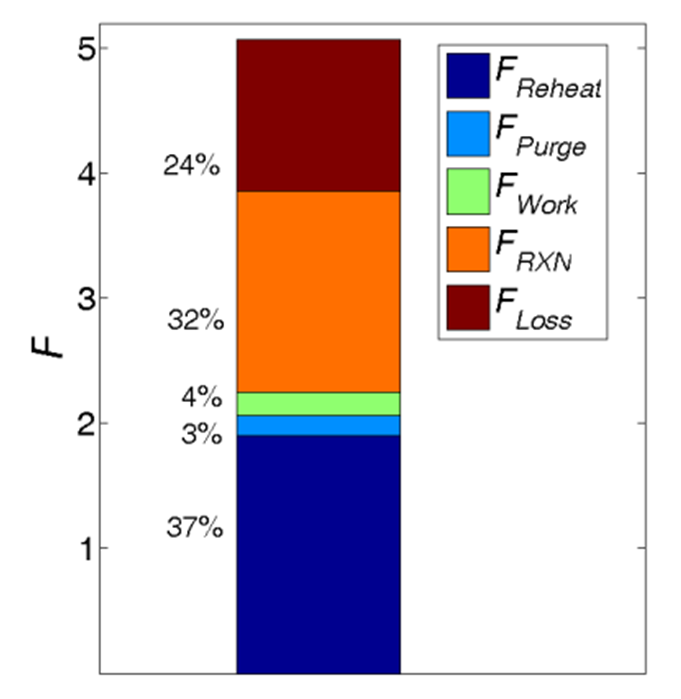A new solar fuels reactor concept based on a liquid metal heat transfer fluid: Reactor design and efficiency estimation


Abstract

A new reactor concept for two-step partial redox cycles is presented and evaluated by transient simulation that considers heat and mass transfer along with reaction kinetics. The major difference between the reactor described herein and previous designs is that the conversion from solar to chemical energy is divided into two steps: sunlight-to-thermal energy conversion accomplished with a liquid metal based receiver, and the thermal-to-chemical conversion accomplished with a separately optimized array of reaction chambers. To connect these two conversion steps, liquid metal is used as a high temperature heat transfer fluid that feeds the solar energy captured in the receiver to the reactor. The liquid metal also facilitates efficient heat recuperation (∼80%) between the reaction chambers. The overall thermal-to-chemical efficiency from the thermal energy in the liquid metal to the chemical energy in the hydrogen fuel is estimated to be 19.8% when ceria is employed as the reactive oxygen storage material. This estimated efficiency is an order of magnitude higher than previous designs and the reactor concept discussed herein identifies important insights that apply to solar–fuel conversion in general.
